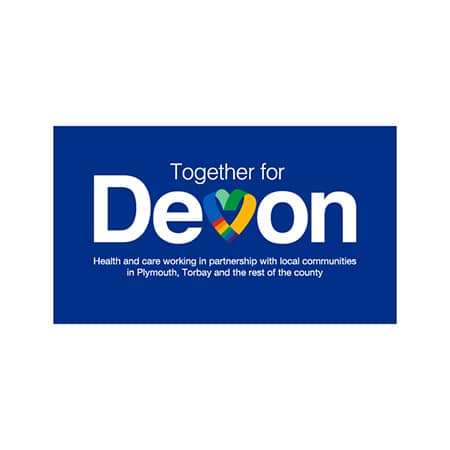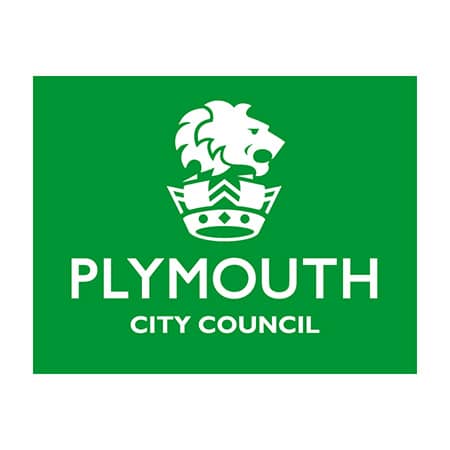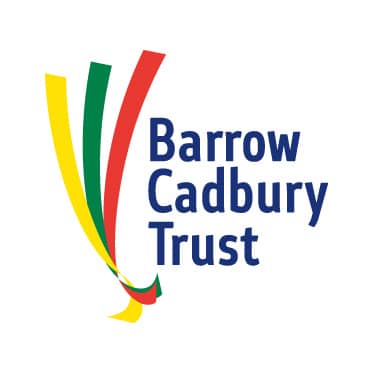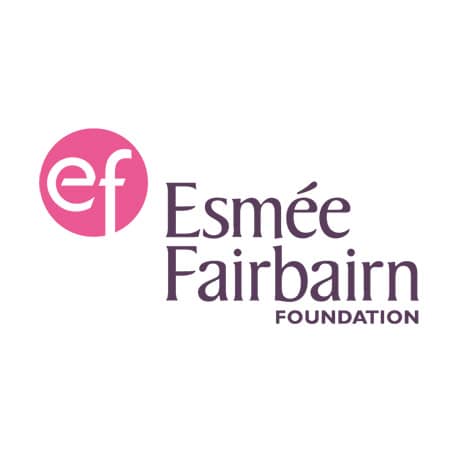Safeguarding
- Safeguarding
- What to do if you have a concern about a child
- What to do if you have a concern about a PVCSE employee, trustee or volunteer
- What to do if you have a concern about a vulnerable adult
- Applying for a DBS
- Safer Recruitment procedures and employee support
- Specific application: POP ideas advice
- Specific application: Street-to-Scale
- What to do if someone makes a disclosure to a member of PVCSE Trustees, staff member or volunteer
Whilst we recognise that PVCSE as an ‘infrastructure organisation, supporting the voluntary and community sector, has very little direct contact with children and young people, there:
- May be times where we do have direct contact;
- As sector ‘leaders’ we need to ensure we understand the basics of what other organisations should be doing.
Key information
|
PVCSE Safeguarding Lead |
Matt Bell (07714 242549) |
|
Plymouth & Torbay Safeguarding Children Partnership |
|
|
Plymouth Gateway Service |
01752 668000 (select option 1) |
If emergency medical attention is required, this can be secured by calling an ambulance (dial 999) or taking a child to the nearest Accident and Emergency Department OR if a child is in immediate danger the police should be contacted (dial 999).
- What is child abuse?
There are many different types of child abuse and many ways in which abuse can occur. The main forms of abuse are:
- Physical abuse – where a child is physically hurt, injured or killed. This can involve hitting, shaking, squeezing, burning and biting. It also includes giving a child poisonous substances, inappropriate drugs and alcohol, and attempting suffocation or drowning. In some cases, excessive force may be used when feeding or changing a child’s nappy.
- Sexual abuse – where children (girls and boys) are sexually abused by adults or other children who use them to meet their own sexual needs. This might be sexual intercourse, and also includes fondling, masturbation, oral sex, anal intercourse and exposing children to pornographic material – including videos.
- Neglect – where parents or carers fail to meet the basic and essential needs of their children to have food, clothes, warmth and medical care. Leaving children alone and unsupervised is also an example of neglect. Parents not giving love and affection to their children is an example of emotional neglect.
- Emotional abuse – where constant lack of love and affection, or threats, verbal attacks, taunting and shouting can lead to a loss of confidence and self-esteem, making a child nervous and withdrawn, or conversely, displaying challenging behaviour e.g. displays of bullying behaviour similar to that they are victim of.
What might make you worry?
- Is the child doing something that is unusual for the child?
- Is the child over-friendly with strangers?
- Do you recognise any or some of the following behaviours in the child?
- Frequent mood changes.
- Unusual eating patterns e.g. always hungry.
- Change in appearance.
- Quiet and withdrawn, a loner, under confident.
- Angry, short attention span, attention seeking, under confident.
- Never wants to go home.
- Tired looking.
- Seductive behaviour.
- Frequent bruises (particularly on fleshy parts).
- Gives the impression of being unloved and unhappy.
Who might be abusing the child?
Abuse can happen inside and outside the family. It might be a parent or carer but it could be a member of the wider family, a family friend, a neighbour, a youth worker, church worker, teacher, play-worker or a volunteer working with children or young people. It could be another child. It could be a member of staff or a volunteer in this organisation.
Do’s and don’ts
Remember that children are vulnerable individuals who do not always communicate their anxieties or concerns in ‘usual’ ways. This is particularly important if a child has special needs or disabilities.
If you suspect child abuse:
|
Do tell your line manager. |
Don’t examine the child. |
|
Do realise that your concerns could be significant and should be passed on. |
Don’t ask leading questions – allow the child to tell their own story. |
If the child tells you something has happened:
|
Do allow the child to do the talking. |
Don’t postpone or delay the opportunity to listen. |
|
Do listen – take the child seriously. |
Don’t ask leading questions. |
|
Do remain calm and caring. |
Don’t allow your own feelings (such as anger, pity or shock) to surface. |
|
Do allow the child to finish. |
Don’t make false promises (e.g. that you will keep ‘the secret’). |
|
Do record the conversation as soon as possible afterwards using the child’s own words. |
Don’t interpret what you have been told; just record it. |
|
Do refer to your line manager and the Safeguarding Lead. |
|
|
Do share your concerns – you are not expected to handle it alone. |
|
|
Do tell the child what you are going to do. Communicate with the child in a way that is appropriate to their age, understanding, language preference and abilities. |
Is the information offered confidential?
No. All information should be recorded. The information will be passed to children’s services if a referral is made. If a referral is not made, concerns should still be shared with the family. There are times that when you should NOT discuss your concerns with the family:
- Where sexual abuse or sexual exploitation is suspected
- Where organised or multiple abuse is suspected.
- Where Fabricated or Induced Illness (previously known as Munchausen Syndrome by Proxy) is suspected
- Where Female Genital Mutilation is the concern
- In cases of suspected Forced Marriage
- Where contacting or discussing the referral would place a child, yourself, or others at immediate risk.
Professionals working with the family also need to be aware of previous concerns. A strategy to manage the sharing of information should be formed with the Safeguarding Lead.
How do I know whether it is definitely child abuse?
Naming the concern as ‘child abuse’ is less important that assessing the level of risk posed to the child. You may feel unsure in your judgement, the Safeguarding Lead and / or the Plymouth Gateway will be able to advise on whether there needs to be a referral made to Children’s Services. You can have an anonymous discussion about your concerns without disclosing the identity of the family at this stage.
You may have this discussion with either of the following:
PVCSE Safeguarding Lead is currently Matt Bell. The role of the nominated officer is to:
- To provide a single point of contact between PVCSE and the statutory child protection agencies- children’s social care and the police.
- To offer consultation and advice about safeguarding and child protection concerns pertaining to the activity of PVCSE.
At this stage do not discuss your concerns further with a potential abuser, even if they are the parents or carers. Doing this could put the child at greater risk of harm.
Making a referral.
If the discussion with the Safeguarding Lead / Plymouth Gateway concludes that there is a risk to the child; at this point you will be required to share your personal details and those of the child and family you are referring. Give all the information you have no matter how insignificant it might seem. When referring a child to Children’s Services consider and include any information you have on the child, their developmental needs and their parents’/carers’ ability to respond to these needs within the context of their wider family and environment. To refer to the Children and Young People’s Service (CYPS) contact the Plymouth Gateway on 01752 668000 (select option 1) and use the referral form here:
http://www.plymouthscb.co.uk/wp-content/uploads/2020/02/MASH-New-Referral-Form-2.docx
If a referral is accepted by CYPS an investigation into the child’s situation takes place at once. In exceptional circumstances, the evidence of an individual may be required in a Court of Law.
Whether the conclusion is that the child is or is not at risk, every effort should be made to handle information discreetly for the benefit of the child and their family by working openly and in partnership with parents or carers and other professionals. This helps identify lower level needs and appropriate action can still be taken. It encourages the spirit of cooperation that makes it easier to share information, which is important when child abuse is suspected. The Safeguarding Lead will be able to offer you practice supervision to manage information sharing appropriately.
Recording
It is vitally important that any disclosure made in confidence is recorded factually as soon as possible. An accurate account should be made of:
- All known personal details of the child, for example: Name of Child, Date of Birth, Addresses of child, parent / carers and other relevant family members.
- Date and time of what has occurred and the time the disclosure was made
- Provide full and accurate details of the issues and concerns. To include details of any persons believed to pose a risk to the child, in the event of a disclosure: the exact words used by the child. Be as observational as possible with no judgements.
- Record of discussion with Safeguarding Lead and Plymouth Gateway.
- Immediate action to be taken, and by whom.
- What is Children’s Services involvement with this child: open / closed, any history?
- Agreed strategy to monitor the situation and protect the child
If you have information which suggest an adult who works with children or young people (in a paid or unpaid capacity) has:
- Behaved in a way that has harmed or may have harmed a child
- Possibly committed a criminal offence against, or related to a child
You should speak immediately with the Safeguarding Lead. They will consult with / make a referral to the LADO for the relevant area. The Local Authority Delegated Officer is Marie Partridge who can be contacted in Children’s Social Care on Plymouth 01752 306340 or email LADO@plymouth.gov.uk.
LADO enquiries and/or concerns can also be managed by colleagues in the Safeguarding & Quality Assurance Team within Children’s Social Care (01752 306340). For advice and guidance ‘out of normal office hours’ (9am to 5pm Monday to Friday) please contact the Plymouth Out of Hours Service on 01752 346984.
- Raise concern with manager
- Online referral
- Advice line
The detail of this process is within the Recruitment Policy.
PVCSE Trustees and staff will be provided with training and induction to assist them to fulfil their duties.
Through the 1:1 group/organisational support the POP ideas team is to take appropriate action to ensure groups/organisations are supported to promote the welfare of children and young people. They will ensure this is achieved by:
- All POP ideas staff providing 1:1 support will ask the group/organisation that they are supporting, if they have a safeguarding policy in place.
- If this safeguarding policy needs updating or drafting from scratch then POP ideas staff will provide this organisational support as part of the capacity building service.
- The POP ideas team will discuss this action note and support to be provided at a team meeting in order to assist them to fulfil their duties.
Street-to-Scale
Street-to-Scale is an experimental method for building connection, trust and social connection in communities. Citizens come together to spend small amounts of money to improve their home neighbourhoods. Street-to-Scale provides the banking and communication infrastructure, and measures impact on social networks and trust.
The innovation is the brainchild of a group of young people working with social entrepreneur Charlie Howard and Ratio, a centre for design and learning. POP is one of several organisations around the U.K. testing of Street-to-Scale in different contexts.
Background to document
This document has been informed through open conversations with both internal and external stakeholders, including Michael Little at Ratio author of:
- [The Blue Book] Child protection – Messages from research, by R. Bullock, M. Little, S. Millham & K. Mount, UK: HMSO 1995, ISBN 0 11 3217811
Safeguarding in this context
Currently the response to safeguarding, rightly, comes from a state and organisational perspective. It focuses on the risk of people being harmed in that context. By definition only visible harm is seen. Research shows that a significant amount of harm is never seen by these state interventions
- Hobbs, T., Tobin, K., Ellis, D., Axford, N., Morpeth, L., & Little, M. Three Circles: the overlap of needs and service provision. Dartington Social Research Unit. February 2019.
This is the diagram for 9-16 year olds

And some key messages come out of this research:
“First, as anticipated, the extent of children’s need in communities exceeds the capacity of services available to meet that need. For the older children, there is sufficient provision only to meet half of the identified need.
Second, some services designed for children with highend needs appear to be used by children with lower level needs. This is a challenging statement and one that might reasonably upset hard-pressed practitioners. Along with the other findings they require validation, but we think the results will hold up.
Third, there are many with high-end needs that receive no high-end services. Despite what may be similar profiles of high-need, some children receive services, whereas others do not.”
Within the context of Street-to-Scale, we also must acknowledge that alongside the visible and hidden harm we also experience significant levels of visible and hidden good.
Context Rules
- Examination of how harm (visible and hidden) through bullying or more harmful behaviours shows that context matters significantly. The negative side of this is seen in the famous Milgram experiment and institutional racism where good people can perform bad things. The opposite is also true shown through studies of bullying where peers having a sense of collective responsibility or eliminate bullying behaviour as well as studies of how communities respond to crime and gang culture.
- Additionally the famous Dunedin study (amongst many others) that show despite harm being experienced, children with protective factors (largely relationship based) lead healthier lives.
The primary ‘safeguarding’ factor is the context Street-to-Scale creates through its design. We are minimising the chances and opportunities for poor behaviour to develop by giving the bank the responsibility, the trust and the constraints to build the right environment for positive behaviour and action. This builds trust and the protective factors (relationships) that our communities and our children need.
Design elements:
Whilst still experimental, after 100 tests, certain design principles are falling out as critical:
- Funding is present – this drives engagement and action. Through action people are able to deepen trust.
- Transparent communications – through the use of WhatsApp all communication is visible to everyone in the bank and to Street-to-Scale.
- The following 3 principles act together to create mutual accountability, spread power and increase reach. These factors strongly act against 1 person taking control maliciously or unintentionally and create a collective sense of purpose which we know further acts against unethical behaviour.
- Separation of duties – bank members are responsible for convening the group and card holders for spending the money. This separation is important to ensure accountability is spread across the group and to encourage widening out of membership.
- Minimum 3 bank members + cardholders – This widens the reach of the banks and spreads trust even wider.
Only young people and vulnerable adults over the age of 16 can use WhatsApp:
- guide them to seek parental consent to participate in Street to Scale. We do not require a consent form, we trust the young person to do the right thing.
- work in teams of three using a single card, thus strengthening the trust relationship within each bank.
- suggest a parent/carer/worker to be a silent member of the WhatsApp group.
The tensions:
In addition to the issue of safeguarding experience, lessons and knowledge in Plymouth (and beyond) that would benefit anyone engaging with Street-to-Scale. To not make an offer to help them would appear ‘uncaring’. But offering help can sometimes removes agency. We must therefore primarily rely on offering support and for people to ask for it rather than make it an expectation.
Therefore the question guiding this piece of work is:
“How do we maximise agency in citizen action, whilst maximising the transparency and openness of relationships, whilst reducing the opportunity for harm?”
By raising this tension and bringing it into view, POP hopes the conversations that develop allow us to balance this tension and keep the Street-to-Scale environment as safe as possible whilst still achieving the aims of the scheme and maximising the benefit for everyone.
Making an offer, without negatively impacting on agency:
In addition to the design elements above, POP will further enhance the safety through:
- Using language and communication at the very start of the process that acts as a deterrent to anyone thinking about using the opportunity to seek contact with vulnerable members of the community. This will start by being about achieving good for the community and communications will highlight the design principles above.
- All groups are invited to read an online resource that includes information about diversity, safeguarding, health & safety etc alongside inspiring ideas about what they could do together.
- After the 8 weeks of activity, for those citizens that want to do more, it would be a great opportunity to engage them in more in depth conversations about how inappropriate/ uncomfortable behaviour can be identified, managed, addressed and reported.
- Debrief and celebration events and ongoing contact with the banks.
- An open offer around safeguarding training, awareness of the PANTS campaign etc would be made.
What else did we consider?
Within the natural constraint of Street-to-Scale i.e. Street-to-Scale ‘banks’ are not constituted organisations we considered the following actions, but decided these would place a disproportionate degree of restriction. Given the nature of funding, most restrictions can only be enforced prior to funding being received. Once received it can only be expectations that are set.
- Requiring groups to have carried out training prior to receiving funding
- This has been judged to significantly reduce agency, delay action, reduce momentum and would prevent many people from taking part.
- Where children & young people are involved, setting a high level of expectation is set that the group understand how to keep themselves and others safe by engaging in training.
- The measures in place are judged to be sufficient and this measure again would reduce agency, delay action, reduce momentum and would prevent many people from taking part.
- Requiring groups to invite POP to meet everyone prior to receiving funding.
- This has been judged to significantly reduce agency, delay action, reduce momentum and would prevent many people from taking part.
- Remove funding for any group working with vulnerable members of the community.
- This has been judged to be unfair at this stage as the most vulnerable members of the community are likely to be those who will benefit the most.
- During the process to an open offer around safeguarding training, awareness of the PANTS campaign etc would be made.
- Questions are ‘dropped-in’ to the WhatsApp chats about ethics and helpful prompts.
- These two measures have been judged to reduce agency by issuing undue expectation. This however will be kept in review.
- Require a minimum of 3 cardholders – This may further widen accountability and eliminates money i.e. power residing in one or two people. However, in practice this can ‘get in the way’ of the group forming and operating.
However, we will be keeping the situation under review
Risk log representing the risks of harm directly or indirectly as a result of Street-to-Scale:
|
Situation |
Risks |
Mitigation through Street-to-Scale design |
Additional actions |
|
An individual joins the ‘bank’ seeking a position to abuse vulnerable members of the community |
|
|
|
|
An individual joins the ‘bank’ and has a history of perpetrating abuse and knowledge becomes widespread |
|
|
|
|
An individual joins the ‘bank’ and has a history of being abused and shares it with the group |
|
|
|
|
Participants within the group are vulnerable (frail, young, learning disability) |
|
|
|
|
The group carries out activities with children, young people or vulnerable groups |
|
|
|
|
Having a credit card and easy access to funds |
|
|
|
|
A participant does something wrong/the group disagree with |
|
|
|
|
A community event is run and vulnerable members of the community attend. |
|
Hints and tips given through Street-to-Scale inspiration pack. |
- Do treat any allegations extremely seriously and act at all times towards the vulnerable adult/child as if you believe what they are saying.
- Do tell the vulnerable adult/child they are right to tell you.
- Do reassure them that they are not to blame and did the right thing by telling you.
- Do be honest about your own position, who you have to tell and why.
- Do tell the vulnerable adult/child what you are doing and when, and keep them up to date with what is happening.
- Do take further action – you may be the only person in a position to prevent future abuse – tell your nominated person immediately.
- Do write down everything said and what was done.
- Remain calm and in control but don’t delay acting.
- If any allegation is related to the conduct of a PVCSE Designated Officer, notification must be made to the Board of Trustees of PVCSE. If it involves a Trustee then notification must be made to the relevant Local Authority Designated Officer (LADO)
DON’T:
- Don’t make promises you can’t keep.
- Don’t interrogate the vulnerable adult/child – it is not your job to carry out an investigation – this will be up to the police and social care, who have experience in this.
- Don’t cast doubt on what the vulnerable adult/child has told you, don’t interrupt or change the subject.
- Don’t say anything that makes the vulnerable adult/child feel responsible for the abuse.
- Don’t do nothing – make sure you tell your nominated Safeguarding person immediately – they will know how to follow this up and where to go for further advise.






